 |
After School Improvement Series: Outdoor Environments |
0.50 |
The After School Improvement Series: Outdoor Environments course will:
Describe different types of outdoor environments, along with the opportunities and challenges each one offers.
Discuss the role outdoor environments play in encouraging children to be active, while promoting a range of different experiences.
Identify the steps you can take to ensure that the outdoor environment is safe and accessible for all children.
Explore how outdoor environments can be used to extend learning opportunities found in indoor environments.
|
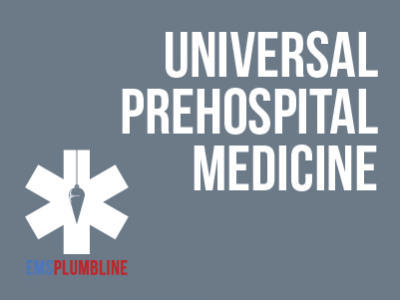 |
Framing: Interviewing a Flight Medic |
1.00 |
The advent of Helicopter Emergency Medical Services (HEMS) has opened the door for care that is often superior to what can be done on the ground. Most providers will look to the speed of transport as the benefit that a helicopter can offer. This lesson is designed to allow the Ground Emergency Medical Service (GEMS) Provider a chance to think differently about HEMS. This interview sheds some light on how just one Flight Medic approaches her job. This enlightening talk will offer a GEMS provider the opportunity to value not just what HEMS can do for the patient but gain some insight as to how the people on the aircraft can make a difference to the persons in need of assistance. Final Exam: This multiple choice exam is designed to test your knowledge of the material you just reviewed. You have TWO attempts to gain a 70% or higher on this exam. Please take your time and answer each question carefully. |
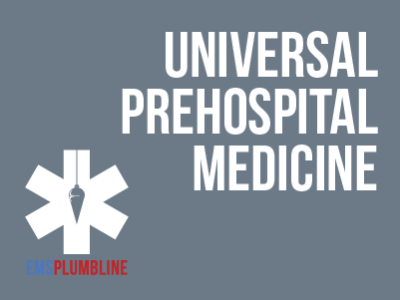 |
Neurogenic Shock Reviewed |
1.00 |
Terms that are commonly heard, such as neurogenic shock and spinal shock often confuse EMS providers. Knowing the meaning of each term is only the beginning. In this overview, Dr. Jeremy Cushman offers a few pearls of wisdom that will assist EMS providers of all levels with the secondary assessment of patients who may have suffered life-threatening spinal trauma. Test: This multiple choice exam is designed to test your knowledge of the material you just reviewed. You have one attempt to gain an 70% or higher on this exam. Please take your time and answer each question carefully.
|
 |
Technology Coaching in Education |
0.75 |
Technology has become an integral part of education. This course covers the responsibilities, benefits, and challenges associated with technology coaching in education. It is designed to help teachers effectively integrate technology into the classroom to improve teaching outcomes. It is just one of the many K-12 education courses we offer. |
 |
Motivation: Identifying, Planning, and Implementing: The Core Four |
1.00 |
Surrounding the positive mental attitude are the Core Four components. These key areas of focus are critical to your motivation and your success. The Core Four elements are health, competence, relationships, and organization. Each of these elements requires focused attention. Without attention to one area, your life will be out of balance. Each area complements the other and is powered by your positive attitude.
In this course you will learn to: strive for good health to foster a positive mental attitude, maintain your competence to nurture a positive mental attitude, improve your relationships to indirectly improve a positive mental attitude, and strive to be organized to encourage a positive mental attitude. |
 |
Motivation: Identifying, Planning, and Implementing: The Core Four (Instructor Guide) |
1.00 |
Surrounding the positive mental attitude are the Core Four components. These key areas of focus are critical to your motivation and your success. The Core Four elements are health, competence, relationships, and organization. Each of these elements requires focused attention. Without attention to one area, your life will be out of balance. Each area complements the other and is powered by your positive attitude.
In this course you will learn to: strive for good health to foster a positive mental attitude, maintain your competence to nurture a positive mental attitude, improve your relationships to indirectly improve a positive mental attitude, and strive to be organized to encourage a positive mental attitude.
This Instructor's Edition of this course includes notes and suggestions to assist you in presenting the material, whether in an in-person classroom setting, or as an instructor-led online or distance-learning course. It also provides you with the answers to questions found in mid-lesson activities, as well as in the quiz that concludes the course. |
 |
Homework Assistance |
2.00 |
Supporting children and youth with their homework is a basic element of nearly all out-of-school time programs, yet it is something that can be challenging for many OST professionals. During this course, participants examine the importance of homework assistance, as well as strategies and skills to provide effective homework assistance. |
 |
The Role of the Site Leader |
2.00 |
Supervising adults is challenging under any circumstances, but in out-of-school time, supervision can be even more challenging because those supervised needs to be independent workers who are creative, energetic, enthusiastic and calculated risk takers. The afterschool site leader must have an arsenal of skills and strategies to be both a leader and a supervisor. This course offers a basic overview of the roles and responsibilities of the site leader or supervisor and how those roles support a culture of team excellence and mutual support. |
 |
Course 09: School-Age Care as a Family Service - Part One |
2.00 |
Strong, positive, cooperative relationships with parents and families are at the heart of quality school-age programs. Unfortunately, positive relationships with parents and families are not always easy to achieve because parents, like children, have widely varying personalities; some are easier to reach than others. Parents in school-age programs have different ideas, values, concerns, knowledge, pressures, lifestyles, plans, dreams, resources, and constraints. Staff who are successful in building positive relationships begin by recognizing the importance of accepting parents as the most important people in children’s lives, regardless of differences among them. They understand that staff attitudes toward parents can have a strong effect on whether or not staff can establish positive relationships with parents. Staff in quality programs make a commitment to learning as much as possible about parents’ needs, interests, wants, and concerns and develop effective strategies for making positive connections with parents. |
 |
School-Age Care as a Family Service: Emphasis on Relationship Building |
2.00 |
Strong, positive, cooperative relationships with parents and families are at the heart of quality school-age programs. Unfortunately, positive relationships with parents and families are not always easy to achieve because parents, like children, have widely varying personalities; some are easier to reach than others. Parents in school-age programs have different ideas, values, concerns, knowledge, pressures, lifestyles, plans, dreams, resources, and constraints. Staff who are successful in building positive relationships begin by recognizing the importance of accepting parents as the most important people in children’s lives, regardless of differences among them. They understand that staff attitudes toward parents can have a strong effect on whether or not staff can establish positive relationships with parents. Staff in quality programs make a commitment to learning as much as possible about parents’ needs, interests, wants, and concerns and develop effective strategies for making positive connections with parents. |
 |
Managing Stress |
1.00 |
Stress is a normal part of life experiences. Sources of stress vary from person to person. What is stressful to one person may not be stressful to another. This course will help you identify sources of stress and develop unique techniques and strategies for minimizing and alleviating the adverse effects of stress. |
 |
STEM in Early Childhood (CDA 2, 3, and 8) |
3.00 |
STEM is an intentional, integrative approach to teaching and learning that can occur across all knowledge areas; it is not a specific curriculum. The STEM approach focuses on providing opportunities for students to explore and develop a comprehensive set of concepts, competencies, and thinking skills. STEM competencies include a vocabulary rich in the language of science, technology, engineering and math—words like hypothesis, gravity, buoyant, balance, temperature, and battery. STEM competencies also include basic principles of engineering, like problem-solving and planning; of science, like experimentation and observation; of technology, like using tools to complete both a task and solve real world problems; and of math by recognizing that basic principles of math are part of everyday activities, like comparing and contrasting, counting, and dividing a whole to create equal parts.
This course is also designed to be part of a Child Development Associate (CDA) Credential™ curriculum. It covers Subject Area 2: Advancing Children’s Physical and Intellectual Development, Subject Area 3: Supporting Children’s Social and Emotional Development and Subject Area 8: Understanding Principles of Child Development and Learning. |
 |
STEM and Supportive Practices |
1.00 |
STEM is an intentional, integrative approach to teaching and learning that can occur across all knowledge areas; it is not a specific curriculum. The STEM approach focuses on providing opportunities for students to explore and develop a comprehensive set of concepts, competencies, and thinking skills.
In this course, we’ll see how the Supportive Practices found in Learning Standards for early childhood promote the development of STEM concepts, competencies, and thinking skills.
Course Learning Objective:
- Use the supportive practices to promote the development of STEM concepts, competencies, and thinking skills. |
 |
STEM and Learning Standards |
1.00 |
STEM is an intentional, integrative approach to teaching and learning that can occur across all knowledge areas; it is not a specific curriculum.
The STEM approach focuses on providing opportunities for students to explore and develop a comprehensive set of concepts, competencies, and thinking skills.
STEM competencies include a vocabulary rich in the language of science, technology, engineering and math—words like hypothesis, gravity, buoyant, balance, temperature, and battery. STEM competencies also include basic principles of engineering, like problem-solving and planning; of science, like experimentation and observation; of technology, like using tools to complete both a task and solve real world problems; and of math by recognizing that basic principles of math are part of everyday activities, like comparing and contrasting, counting, and dividing a whole to create equal parts.
Course Learning Objectives:
Demonstrate how learning standards for early childhood promote the development of STEM concepts, competencies, and thinking skills. |
 |
Workplace Basics |
1.00 |
Starting a new job is intimidating enough, even more so when you are confused about how the basic workplace functions. This course will take you through the most essential things to know. This way, you can become the most successful worker possible. |
 |
Developing Children's Emergent Literacy Skills (CDA 2) |
2.00 |
Spark curiosity, and inspire imagination: Watch young minds blossom as they build pre-reading and writing skills! This course equips you with playful, effective approaches to foster essential emergent literacy skills, setting the stage for future reading and writing success. |
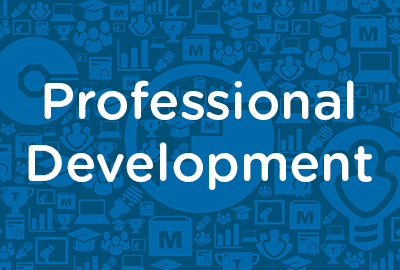 |
Interviewing Skills: Handling and Conducting (Instructor Guide) |
1.00 |
Some interviewees demand a particularly focused and skillful use of interviewing techniques. Your ability to handle talkative, uncommunicative, nervous, or inexperienced candidates is important in order to get an accurate assessment of the candidate’s abilities. If you develop ways of handling various types of interviewees before the interview begins, you’ll be able to encourage them to respond positively and share information. You’ll also avoid the mistake of eliminating candidates on the basis of value judgments or preconceptions.
An interview is a two-way conversation designed to gather information about, and provide information to the candidate, so you both can decide on the fit between the position, the organization, and the candidate. Good interviews flow smoothly when both the interviewer and the candidate take part in an information exchange.
In this course you will learn to: handle an interview by developing an understanding of the various types of candidates, and conduct an interview by following a specific structure and using effective communication techniques.
This Instructor's Edition of this course includes notes and suggestions to assist you in presenting the material, whether in an in-person classroom setting, or as an instructor-led online or distance-learning course. It also provides you with the answers to questions found in mid-lesson activities, as well as in the quiz that concludes the course. |
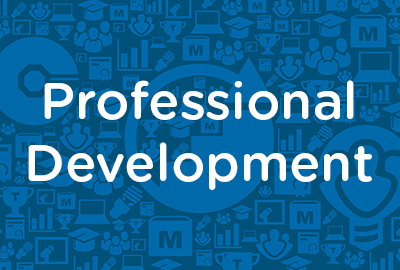 |
Interviewing Skills: Handling and Conducting |
1.00 |
Some interviewees demand a particularly focused and skillful use of interviewing techniques. Your ability to handle talkative, uncommunicative, nervous, or inexperienced candidates is important in order to get an accurate assessment of the candidate’s abilities. If you develop ways of handling various types of interviewees before the interview begins, you’ll be able to encourage them to respond positively and share information. You’ll also avoid the mistake of eliminating candidates on the basis of value judgments or preconceptions.
An interview is a two-way conversation designed to gather information about, and provide information to the candidate, so you both can decide on the fit between the position, the organization, and the candidate. Good interviews flow smoothly when both the interviewer and the candidate take part in an information exchange.
In this course you will learn to: handle an interview by developing an understanding of the various types of candidates, and conduct an interview by following a specific structure and using effective communication techniques. |
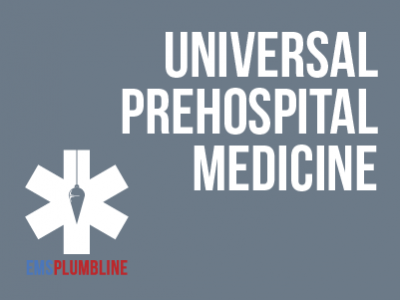 |
Communications for the Fire and EMS Supervisor |
1.00 |
So much of what we do in Fire and EMS is problem-solving. This CME is a fantastic means for managers to learn about the very technical field of Radio Communications. If you are a manager that is in the position of problem-solving, you will want to take time to review this material. Three experienced professionals succinctly discuss what you will need to know when preparing for a problem or reacting to problems in the Radio Communications realm. Final Exam: This multiple-choice exam is designed to test your knowledge of the material you just reviewed. You have two attempts to gain an 70% or higher on this exam. Please take your time and answer each question carefully. |
 |
Employment |
1.50 |
Several factors can contribute to someone being without work. These factors can be societal—a result of community circumstances, or subjective—due to individual traits. This course will explore how self-defeating thoughts and other external factors contribute to periods of unemployment.
Additionally, this course will dive into the process of breaking through these barriers to become employed and the skills required to maintain a job. |
 |
Knowing My Personality and Emotional Intelligence |
1.00 |
Self-awareness and self-regulation are key aspects of emotional intelligence, and a significant part of what we need to know and regulate is our personality style, which is embedded with inherent strengths and weaknesses. Participants are invited to take the Educator Assessment of Social and Emotional Learning (EASEL), a powerful tool that increases emotional intelligence and resilience in educators by helping them understand their personality style. This online assessment was developed by Dr. Adam Sáenz and his colleagues in the College of Education at Texas A&M University. Based on my personality style, what are my relational strengths? My weaknesses? Which students will be easiest and most difficult for me to connect with? What biases might I be bringing into the classroom? |
 |
Combating Sexual Harassment in the Workplace (NY) (Spanish) Combatir el Acoso Sexual en el Lugar de Trabajo |
1.00 |
Según la ley estatal vigente en octubre de 2018, todos los empleadores de Nueva York deben establecer una política de prevención del acoso sexual que incluya capacitación anual, de conformidad con la Sección 201-G de la Ley Laboral.
Este curso fue creado por CypherWorx en base a la actualización de 2023 de los materiales de capacitación desarrollados por el Departamento de Trabajo y la División de Derechos Humanos del Estado de Nueva York, y está diseñado para cumplir o superar los estándares requeridos por la ley estatal. |
 |
Developing Activities That Support Character Development and Promote Social Interaction |
2.00 |
School-age programs can provide children with many opportunities to work on character development. Staff who are knowledgeable about character development can create program experiences that help individual children bring out their best inner qualities as they interact with peers and adults outside the family. Staff can also use this knowledge to help children make positive contributions to the program, their school, their community, and to the world beyond their community. |
 |
Course 11: Building Relationships with School Personnel |
2.00 |
School-age programs and schools share a mutual goal of supporting the growth, development, and learning of school-age children. Over 50% of all school-age programs nation-wide are housed in school facilities. When school-age programs are housed in school facilities, it is essential for staff in school-age programs to establish and maintain a positive relationship with school personnel. This makes it possible for schools and programs to work together to support the needs of the whole child. Staff can develop successful partnerships with school personnel by cultivating an understanding of the needs, interests, and goals of school personnel and using effective strategies, tools, and systems to build a spirit of positive collaboration and communication. |
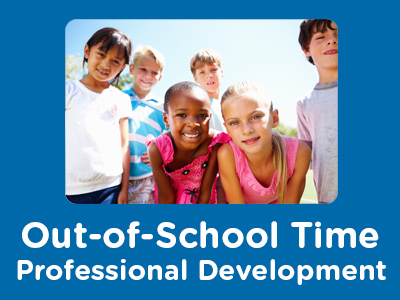 |
Building Relationships with School Personnel |
2.00 |
School-age programs and schools share a mutual goal of supporting the growth, development, and learning of school-age children. Over 50% of all school-age programs nation-wide are housed in school facilities. When school-age programs are housed in school facilities, it is essential for staff in school-age programs to establish and maintain a positive relationship with school personnel. This makes it possible for schools and programs to work together to support the needs of the whole child. Staff can develop successful partnerships with school personnel by cultivating an understanding of the needs, interests, and goals of school personnel and using effective strategies, tools, and systems to build a spirit of positive collaboration and communication. |


























